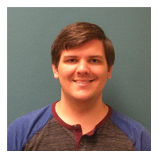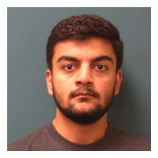Two More SCGSR Awards for UT Physics
Trevor Keen and Kavish Imam are the department’s most recent awardees
Condensed matter systems and matter-antimatter asymmetry; quantum computers and cryogenic magnets—these are the studies and tools Trevor Keen and Kavish Imam will tackle with support from the U.S. Department of Energy via the Office of Science Graduate Student Research (SCGSR). With these latest awards, UT is squarely in the top three institutions in the nation for success in securing funding from this program.
The SCGSR program prepares graduate students for careers in science, technology, engineering, or mathematics that align with the Department of Energy’s mission. Students who win funding through the program have thesis research opportunities working with scientists at DOE national laboratories. Both Keen and Imam will be working at Oak Ridge National Laboratory (ORNL).

Keen earned bachelor’s degrees in both computational physics and mathematics at Southern Illinois University before enrolling in UT’s graduate program in physics. He began working with Associate Professor Steve Johnston in the spring of 2018. His SCGSR grant will support research in the development and deployment of simulations for condensed matter systems using quantum computers. Classical simulations of these systems—which can be nanoscale in size—suffer from a common shortfall: exponential scaling. Keen will implement and test quantum-classical algorithms to take advantage of quantum resources (qubits) to solve the Hubbard model, a tool scientists use to work out &1uot;electron hopping" in transitions from metal to insulator. The project will also provide benchmarks for proposed algorithms to keep algorithmic development in pace with hardware advances. Keen’s ORNL adviser is Eugene Dumitrescu, following previous work with Pavel Lougovski.

Imam will be working with the nEDM@SNS experiment at ORNL, which aims to search for new sources of time-reversal and charge-parity symmetry violations necessary to explain the observed matter-antimatter asymmetry of the universe. The goal is to set a new limit on the neutron’s electric dipole moment—a tiny separation of charge believed to have made the difference in matter winning out over antimatter after the Big Bang, meaning we would have a universe rather than nothing at all. Headquartered at the Spallation Neutron Source on the Fundamental Neutron Physics Beamline, the experiment uses a cryogenic magnet to provide the magnetic field environment required to achieve the necessary and sensitive measurements. As neutrons traverse through the magnet beam windows, a large neutron polarization and transmission loss can lead to a decrease in the statistical sensitivity of the experiment. Iman will characterize what’s happening by performing these needed measurements. He has been working with Associate Nadia Fomin and Professor Geoff Greene (who holds a joint appointment at ORNL) since the fall of 2017, after coming to UT as a graduate of the University of Texas at Arlington. (Fomin is also adviser to Casey Morean, who won SCGSR funding earlier this year.)
SCGSR awards provide support for travel to and from national laboratories, as well as a monthly stipend of up to $3,000 for general living expenses while at the host laboratory. Keen and Imam are part of the most recent cohort of 52 graduate students across the country to win this funding, provided by the U.S. Department of Energy.
Learn more about the SCGSR program here: https://science.osti.gov/wdts/scgsr.